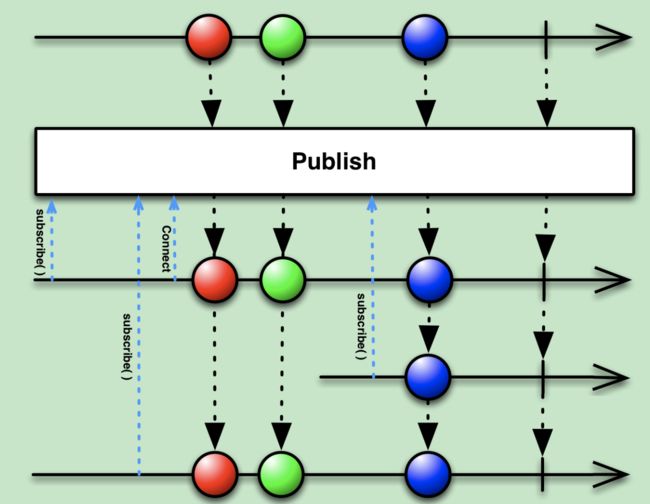- XSS总结:跨站脚本(XSS)攻击向量(精)
墨痕诉清风
渗透常识研究xssjavascriptfirefox
alert(1)alert("xss")alert(9801)//url参数,加载元素//edit输入框插入//学SQL注入?其第一个1为正常参数1">alert(1)事件处理不需要用户交互的事件处理程序激活元素时触发(IE)页面打印后触发(Chrome、Firefox、IE)CSS动画取消时触发(Firefox)@keyframesx{from{left:0;}to{left:1000px;}}
- 《博浪沙的冬天》之《武原战“疫”》【第10集】
司马喆
第10集8706辛丑金牛年农历十二(腊)月十七,公元2022(壬寅)年1月19日,星期三。第四周。距离2022年中考仅剩156天。距离壬寅年春节仅有12天。今日格言有幸遇到价值观相同的人,一定要好好珍惜!路,要和优秀的人一起走,才能长远;事,要和靠谱的人一起做,才能妥当;日子,要和懂你的人一起过,才算值得。早上5:03分醒了,迅速起来了。看了炉火,由于把下面堵严实了,这一夜里仅用了一块煤球。终于不
- 无标题文章
彳_55a5
毕业之后你们都去了什么地方?http://mp.weixin.qq.com/s?__biz=MzU3NjYxNzM0NQ==&mid=100000003&idx=1&sn=cdddddb953d7f2b7444b7788653bedb0&chksm=7d106fed4a67e6fbb85708e5d49837405caeba0f4f7667acda81e40e67fe2870139a5fd4eb3
- 【web-攻击用户】(9.1.6)查找并利用XSS漏洞--基于DOM
黑色地带(崛起)
0X02【web渗透】web安全
目录查找并利用基于DOM的XSS漏洞1.1、简介:1.2、过程:查找并利用基于DOM的XSS漏洞1.1、简介:1、提交一个特殊的字符串作为每个参数,然后监控响应中是否出现该字符串,无法确定基于DOM的XSS漏洞2、确定基于DOM的XSS漏洞的基本方法是,用浏览器手动浏览应用程序,并修改每一个URL参数,在其中插入一个标准测试字符串(如alert(1)和;alert(1)//等)3、通过在浏览器中显
- 2022-03-13
是大珊呐
本周七年级刚从基地回来,发了一下寒假冬奥会主题的奖状,不管是手抄报行式的还是直接画冬奥会吉祥物的作品都十分的用心,展板呈现的效果也比较好,看来以后的教学还是以提高学生的兴趣为主,让学生画自己想画的才能激发出学生的潜力。九年级按部就班讲了一下这次期末考试的试题分析了一下绘画需要注意的点,可能是元旦疫情来的太突然,学生整个疫情和寒假期间学习太过懒惰美术考试成绩十分不理想,其他科目更不理想,提高学生的主
- 电影《你好,李焕英》观后感
星月阳_edac
2021的开场,我和闺蜜看了今年比较火的两部电影,而且是在一天之内。先说说后看的这一场电影吧--《你好,李焕英》。这部电影是由喜剧演员贾玲所导演,根据自己的亲身经历指导了这部电影。这部电影讲述的是女主的妈妈在一次车祸中受伤,因此穿越了母亲年轻的时代—1981年,正好与母亲撞个正着,女主没想到的是此时的年轻母亲却也是从未来而来。之后的剧情更多的是喜剧内容,不同的演员上场,给观众带来了更多的乐趣,但是
- 当代短篇小说选:《清风店》(七)
闲读与苦读
别说读书苦,那是你看世界的路——每年冬季照例的整风整社开始了。因为清风店不是重点村,上头没有派工作组来。事情偏这么凑巧,借用段顺的话:就好像鬼使神差。恰在整风之前,常四起到县委党校去学习。“天下大事”便有了另外的演变:在给清风店领导提意见的时候,段顺和老曹克星没想到群众对常四起的工作竟也指出不少缺点。自然,有的意见,老曹克星当众解释一下,便不存在了。常言说的好,人被感情统治的时候,理智便退避三舍了
- 内置常用模块
Oscar_hailiang
1.datatime获取当前系统时间戳importdatetimedatetime.datetime.now().timestamp()>>1559188649.150062
- 2021-8-7晨间日记
宋会兵
今天是什么日子起床:7:15就寝:天气:晴好心情:纪念日:任务清单昨日完成的任务,最重要的三件事:改进:习惯养成:昨天会长和老陆下棋下了几盘,又和小鲁下了两盘,小鲁中午过来已经和老陆下了半天,老陆晚饭后小鲁还要下,这小鲁是越下越精神,越下越能磨。周目标·完成进度学习·信息·阅读健康·饮食·锻炼人际·家人·朋友工作·思考最美好的三件事1.2.3.思考·创意·未来
- 和呈睿新闻 | 电视剧《三十而已》、《二十不惑》热播,主角商标却无一注册?
初晴_5e72
最近,电视剧《二十不惑》、《三十而已》同时上映,当90后的大龄女青年遇上00后的青春女孩,两部剧的主角们同框飚戏,让人着实惊喜了一把。《二十不惑》讲述的是一群即将毕业的大学生在进入社会之前所经历的一些事情,有人说,这其中的一些经历简直就是自己的过往经历的真实写照,展现了青春的迷茫和对未来的期许。《三十而已》则主要讲述的是一群刚步入婚姻和家庭的年轻女性的所感、所悟,他们不但要面对事业,还要同时面对家
- 高省邀请码是什么?高省app邀请码怎么获得?
凌风导师
写点什么...大家好,我是高省最大联合创始人,今天来聊聊高省邀请码的重要性。一、高省APP是什么?高省,一款可以通过分享赚钱的APP,只要动动手指与好友分享优惠券并成功下单,即可获得佣金。用来省钱,分享来赚钱。高省-各大应用商城下载即可-购物领劵返利高,邀请码切记填998888,凌风高省邀请码998888,全网唯一教你技术的老师码填对码直送2皇冠总裁等级,《凌风导师V:125130414》送价值百
- 大反转!孙兴慜被冤枉?
亿元亿元_
热刺与埃弗顿的比赛,两队最终1-1握手言和,补时阶段迪涅助攻托松打进扳平比分一球!不过这场比赛,比起比分来,孙兴慜在下半场对戈麦斯的一次犯规,更加引人关注。孙兴慜的这次放铲,直接导致了戈麦斯受伤(90度弯曲)。随后,韩国天王也被裁判由黄牌改判成红牌,直接被罚下。而孙兴慜在赛后也被推向了风口浪尖。不过,戈麦斯受伤的罪魁祸首究竟是孙兴慜还是另有其人,在比赛结束之后却出现了大反转。根据现场比赛的照片,英
- rce漏洞测试
目录什么是RCE?漏洞介绍漏洞分类远程命令执行29关30关31关32~36关37关38关39关40关41关42关43关44关45关46~49关总结什么是RCE?漏洞介绍RCE漏洞,可以让攻击者直接向后台服务器远程注入操作系统命令或者代码,从而控制后台系统。RCE主要指远程代码执行和远程命令执行,CTFHub中将文件包含漏洞也看作RCE漏洞。漏洞分类远程命令执行远程代码执行文件包含漏洞实际上,RCE
- 《乡村才俊》叶临宋书蕾全文免费阅读【完整版】
云轩书阁
《乡村才俊》叶临宋书蕾全文免费阅读【完整版】主角:叶临/叶庆泉宋书蕾/宋嘉琪简介:都说弱水三千只取一瓢饮,我也是这么想的,可现实不允许啊!可关注微信公众号【纯精灵】去回个书號【298】,即可免费阅读【乡村才俊】小说全文!初来乍到,为了给单位里的同事留下好印象,我万事都得表现出谦逊的样子,哪怕对方是个临时工,就微笑着寒暄道:“两位大姐是啥时候开始在管理局工作的啊?”胖女人心直口快,她憨厚的笑着说道:
- 2022年4月15日读书笔记
龙套哥萨克海龙
今日阅读1小时,总计1917小时,第1858日阅读《在国家与社会之间》通过前面的讨论,我们知道,经过相当长时期的一系列改革,新的财政赋税体制在清代中期最终确立起来。这种与明初所定的赋役制度有根本性差别的财政赋税体制的确立,意味着政府赖以作为征收赋税基础的户籍制度,也必然随之发生根本性的改变。图甲的编制,已经不是一种以家庭和人口为中心的组织,而变成一种以田地赋税为中心的系统。这种人在此里、田在彼里的
- 绘本讲师训练营【64】期9/21实践原创
喵喵糖果
64018陈小燕主题:爱与善良也是一种力量城市:厦门时间:2020年9月5日场次:第2场地点:乐之森书名:《你真好》主讲人:陈小燕/喵喵老师参与人数:15人年龄:3-8岁封面【绘本介绍】书名:《你真好》作者:(日)宫西达也著蒲蒲兰译出版:二十一世纪出版社内容简介:从前,有一只粗暴的、坏心眼的、狡猾的、任性的霸王龙,他总是欺负弱小。但他掉到海里,被善良的薄片龙救出来后,他就跟薄片龙交上朋友。他们天天
- 【机翻】第4课-故事结构:好莱坞经典告诉你,让人欲罢不能的故事怎么编
读书打字
各位同学大家好,从这堂课急呢,我们第二阶段的学习就开始了。在第一阶段结束的时候啊,老师布置了两篇作业,其中一篇作业是让大家写一个受骗上当的故事。到现在为止呢,一共是有59位同学叫作业了。周三晚上的直播中,老师也对这些作业做出了点评。通过这些作业,老师了解了大家的水平,更重要的是了解到了大家共同的一些问题。有的同学啊在经过的第一阶段的学习以后啊,从一个从未写过任何作品的小白开始动笔写故事了,而且写的
- 为你写诗-1248-《实在是这个世界的注意力有限,要怪就怪你只是凡人只是芸芸众生》
幻梦邪魂
这个世界对于普通人太不友好,对于名人明星又太过月圆花好。。。现实就是这么残酷你早该知道的有时候就算你做到了比99%的人都好可只要你不是万中无一就不被需要我们不怪这个世界喜欢钻牛角我们也不怪普罗大众就喜欢名人明星的各种八卦爆料不怪他们有眼不识金镶玉也不怪他们人云亦云实在是这个世界的注意力有限他们也只能把有限的精力放在有限的人身上探听如果你没有什么特别的做的事情写的东西又不能够惊爆眼球让大家目不转睛那
- 胶水(119)
假装是老付
他是那种非常聪明的人,总觉得你在下一盘高阶象棋,而不是和他进行一场热情友好的辩论。Hewasthetypeofpersonwhowassosmartthatitalwaysfeltlikeyouwereplayinganadvancedgameofchessratherthanhavingacordialdebatewithhim.他没有像训练国际象棋运动员那样思考此后的三步棋,而是思考已经走过的
- 2019-06-19关于女性“痛经”小偏方 原创: 候晓宾 润土眉目传书 今天 ▼ 关于女生“痛经”的小方法 关于女生“痛经”的小方法 女性应该是这个世界上...
森林走心篇章
关于女性“痛经”小偏方原创:候晓宾润土眉目传书今天▼关于女生“痛经”的小方法关于女生“痛经”的小方法女性应该是这个世界上最伟大的存在,承担了很多的社会角色,为人类的繁衍生息和发展提供了诸多的帮助和贡献。大家有知道,每个女孩子都会有例假。有的生理期平淡无事,而有的生理期则是经历鬼门关一样。本着一颗善良的心,然后搜罗了一下,希望对于女性朋友有所帮助。之前有个女同事,某天看到她捂着肚子,脸色苍白,汗如雨
- 穿越日记
牧屿樵谷
总体要求:记录过去的某天,从早上醒来到晚上睡觉前,记录有关学习的一切活动和相关决策,并以过来人(学过这门课的人)的身份进行评价,目的是展示自己对学习的监控能力。日期:2021年5月8日8:10~9:50上金融企业会计课,在第一节课程中,由于天气太热导致注意力不够集中,中途还有点犯困,这种状态持续了大概十几分钟,我看到旁边的室友在认真做笔记,我一时感到惭愧,然后开始调整状态认真做笔记认真听课。(评价
- 内核编译配置选项简介 (2.4.18-rmk7-pxal)(转)
wenlifu71022
linux内核编译网络idesystemlinuxnetworkinglinux内核
http://blog.chinaunix.net/u1/40228/showart_335965.htmlCodematurityleveloptions代码成熟度选项[*]Promptfordevelopmentand/orincompletecode/drivers显示尚在开发中或尚未完成的代码与驱动.除非你是测试人员或者开发者,否则请勿选择我是开发者,所以选[*][]Promptforob
- 革命老区涉县千名留守妇女组织起来了,每天学习技能只为了居家可就业。助力乡村振兴
85c9fc40e512
#妇女就业问题,是最大的民生问题,我们为革命老区涉县,千名留守妇女居家就业谋幸福,星星之火可以燎原,一起努力春华秋实#太行巾帼出太行
- Python day15
@浙大疏锦行Pythonday15.内容:复习日本周主要的内容是一些常见的机器学习流程以及其中的部分内容标签编码以及连续特征的处理:归一化和正态化等。图像的绘制:热力图、Shap图等的绘制超参数优化算法:网格搜索、贝叶斯以及启发式算法模拟退火、遗传算法等不平衡数据集的处理:过采样以及欠采样。
- Python Day16
赵英英俊
Python训练python
@浙大疏锦行Pythonday16内容:numpy数组的创建以及相关操作numpy的索引理解SHAP值代码:importnumpyasnpa=np.array([[1,2],[3,4],[5,6]])b=np.array([[7,8],[9,10],[11,12]])效果:
- 2021-8-2晨间日记
素人Y
今天是什么日子起床:6:16不错呦就寝:11:50由于没电睡得很晚,这都是借口罢了,自己不想早睡天气:太阳心情:愉悦纪念日:每天都是好好生活的一天任务清单昨日完成的任务,最重要的三件事:逛街吃美食买衣服改进:自律,不要因为放假就放纵自己习惯养成:早睡早起周目标·完成进度提升气质学习·信息·阅读瑜伽动作,看新闻,听书写作,看书健康·饮食·锻炼吃饭的时候好好吃饭睡觉的时候好好睡觉,也该好好锻炼人际·家
- 对于页面适配,你应该使用px还是rem
мо仙堡杠把子灬
css做一个有知识的流氓
其实一切都还好,没有那么糟糕。css中的单位很多,%、px、em、rem,以及比较新的vw、vh等。每个单位都有特定的用途,比如当需要设置一个矩形的宽高比为16:9,并且随屏幕宽度自适应时,除了用%,其他单位是很难做到的。所以不存在说某个单位是错误的,某个单位是最好的这种说法。那本文说的页面适配,指的是同样的布局,在不同大小的屏幕上怎么进行缩放、控制间距、宽高、字号等大小。页面适配的方式有很多:使
- 介绍一本书
0fc8a53a7537
书就像是台阶,能让你在学习方面越登越高。书也像是一把钥匙,它能使你解开无数难题。我介绍的书是著名动物小说大王沈石溪写《狼王梦》。他1969年初中毕业赴西双版纳插队,在云南边疆生活了18年。他现在是中国作家协会儿童文学委员会委员,上海作家协会理事。曾经获得过中国作家协会全国优秀儿童文学奖,中国图书奖,冰心儿童文学新作奖大奖等多种奖项。非常厉害!有很多同学一定看过《狼王梦》,但《狼王梦》在我心目中有不
- 强化学习在成语接龙比赛中的应用
LucienCho
题目:裁判任意给出一个成语,比赛双方在有限的时间里轮流进行成语对答,要求:1.成语的首字要与上一个成语的尾字同声同调;2.当前比赛出现的所有成语不能再次出现;3.必须为四字成语分析:看到这个题目,笔者本能的想法是用现成代码跑一跑。但是在git上搜不到能赢得比赛的成语接龙代码,大多数代码只是实现了成语接龙的功能,随机找出符合规则的成语,不足以想赢得比赛,所以打算自己尝试。重新分析一遍规则吧!若不考虑
- 挽刘思齐同志
王海波w
2022年1月7日凌晨1时47分,毛泽东儿媳、毛岸英的妻子在北京逝世。听到这个噩耗,深感痛惜。有一张照片,是他抚摸英雄墓碑的照片、表情凝重、当时她何种心情,何种悲哀,挽思齐同志,如果真的有另外一个世界,间隔几十年的漫长等待,终于可以相聚了。刘思齐,又名刘松林,1930年出生于湖北,刘谦初烈士和张文秋的女儿,刘思齐的母亲是毛泽东的革命战友,1927年,在武汉召开的中共第五次代表大会上,毛泽东见到张文
- mysql主从数据同步
林鹤霄
mysql主从数据同步
配置mysql5.5主从服务器(转)
教程开始:一、安装MySQL
说明:在两台MySQL服务器192.168.21.169和192.168.21.168上分别进行如下操作,安装MySQL 5.5.22
二、配置MySQL主服务器(192.168.21.169)mysql -uroot -p &nb
- oracle学习笔记
caoyong
oracle
1、ORACLE的安装
a>、ORACLE的版本
8i,9i : i是internet
10g,11g : grid (网格)
12c : cloud (云计算)
b>、10g不支持win7
&
- 数据库,SQL零基础入门
天子之骄
sql数据库入门基本术语
数据库,SQL零基础入门
做网站肯定离不开数据库,本人之前没怎么具体接触SQL,这几天起早贪黑得各种入门,恶补脑洞。一些具体的知识点,可以让小白不再迷茫的术语,拿来与大家分享。
数据库,永久数据的一个或多个大型结构化集合,通常与更新和查询数据的软件相关
- pom.xml
一炮送你回车库
pom.xml
1、一级元素dependencies是可以被子项目继承的
2、一级元素dependencyManagement是定义该项目群里jar包版本号的,通常和一级元素properties一起使用,既然有继承,也肯定有一级元素modules来定义子元素
3、父项目里的一级元素<modules>
<module>lcas-admin-war</module>
<
- sql查地区省市县
3213213333332132
sqlmysql
-- db_yhm_city
SELECT * FROM db_yhm_city WHERE class_parent_id = 1 -- 海南 class_id = 9 港、奥、台 class_id = 33、34、35
SELECT * FROM db_yhm_city WHERE class_parent_id =169
SELECT d1.cla
- 关于监听器那些让人头疼的事
宝剑锋梅花香
画图板监听器鼠标监听器
本人初学JAVA,对于界面开发我只能说有点蛋疼,用JAVA来做界面的话确实需要一定的耐心(不使用插件,就算使用插件的话也没好多少)既然Java提供了界面开发,老师又要求做,只能硬着头皮上啦。但是监听器还真是个难懂的地方,我是上了几次课才略微搞懂了些。
- JAVA的遍历MAP
darkranger
map
Java Map遍历方式的选择
1. 阐述
对于Java中Map的遍历方式,很多文章都推荐使用entrySet,认为其比keySet的效率高很多。理由是:entrySet方法一次拿到所有key和value的集合;而keySet拿到的只是key的集合,针对每个key,都要去Map中额外查找一次value,从而降低了总体效率。那么实际情况如何呢?
为了解遍历性能的真实差距,包括在遍历ke
- POJ 2312 Battle City 优先多列+bfs
aijuans
搜索
来源:http://poj.org/problem?id=2312
题意:题目背景就是小时候玩的坦克大战,求从起点到终点最少需要多少步。已知S和R是不能走得,E是空的,可以走,B是砖,只有打掉后才可以通过。
思路:很容易看出来这是一道广搜的题目,但是因为走E和走B所需要的时间不一样,因此不能用普通的队列存点。因为对于走B来说,要先打掉砖才能通过,所以我们可以理解为走B需要两步,而走E是指需要1
- Hibernate与Jpa的关系,终于弄懂
avords
javaHibernate数据库jpa
我知道Jpa是一种规范,而Hibernate是它的一种实现。除了Hibernate,还有EclipseLink(曾经的toplink),OpenJPA等可供选择,所以使用Jpa的一个好处是,可以更换实现而不必改动太多代码。
在play中定义Model时,使用的是jpa的annotations,比如javax.persistence.Entity, Table, Column, OneToMany
- 酸爽的console.log
bee1314
console
在前端的开发中,console.log那是开发必备啊,简直直观。通过写小函数,组合大功能。更容易测试。但是在打版本时,就要删除console.log,打完版本进入开发状态又要添加,真不够爽。重复劳动太多。所以可以做些简单地封装,方便开发和上线。
/**
* log.js hufeng
* The safe wrapper for `console.xxx` functions
*
- 哈佛教授:穷人和过于忙碌的人有一个共同思维特质
bijian1013
时间管理励志人生穷人过于忙碌
一个跨学科团队今年完成了一项对资源稀缺状况下人的思维方式的研究,结论是:穷人和过于忙碌的人有一个共同思维特质,即注意力被稀缺资源过分占据,引起认知和判断力的全面下降。这项研究是心理学、行为经济学和政策研究学者协作的典范。
这个研究源于穆来纳森对自己拖延症的憎恨。他7岁从印度移民美国,很快就如鱼得水,哈佛毕业
- other operate
征客丶
OSosx
一、Mac Finder 设置排序方式,预览栏 在显示-》查看显示选项中
二、有时预览显示时,卡死在那,有可能是一些临时文件夹被删除了,如:/private/tmp[有待验证]
--------------------------------------------------------------------
若有其他凝问或文中有错误,请及时向我指出,
我好及时改正,同时也让我们一
- 【Scala五】分析Spark源代码总结的Scala语法三
bit1129
scala
1. If语句作为表达式
val properties = if (jobIdToActiveJob.contains(jobId)) {
jobIdToActiveJob(stage.jobId).properties
} else {
// this stage will be assigned to "default" po
- ZooKeeper 入门
BlueSkator
中间件zk
ZooKeeper是一个高可用的分布式数据管理与系统协调框架。基于对Paxos算法的实现,使该框架保证了分布式环境中数据的强一致性,也正是基于这样的特性,使得ZooKeeper解决很多分布式问题。网上对ZK的应用场景也有不少介绍,本文将结合作者身边的项目例子,系统地对ZK的应用场景进行一个分门归类的介绍。
值得注意的是,ZK并非天生就是为这些应用场景设计的,都是后来众多开发者根据其框架的特性,利
- MySQL取得当前时间的函数是什么 格式化日期的函数是什么
BreakingBad
mysqlDate
取得当前时间用 now() 就行。
在数据库中格式化时间 用DATE_FORMA T(date, format) .
根据格式串format 格式化日期或日期和时间值date,返回结果串。
可用DATE_FORMAT( ) 来格式化DATE 或DATETIME 值,以便得到所希望的格式。根据format字符串格式化date值:
%S, %s 两位数字形式的秒( 00,01,
- 读《研磨设计模式》-代码笔记-组合模式
bylijinnan
java设计模式
声明: 本文只为方便我个人查阅和理解,详细的分析以及源代码请移步 原作者的博客http://chjavach.iteye.com/
import java.util.ArrayList;
import java.util.List;
abstract class Component {
public abstract void printStruct(Str
- 4_JAVA+Oracle面试题(有答案)
chenke
oracle
基础测试题
卷面上不能出现任何的涂写文字,所有的答案要求写在答题纸上,考卷不得带走。
选择题
1、 What will happen when you attempt to compile and run the following code? (3)
public class Static {
static {
int x = 5; // 在static内有效
}
st
- 新一代工作流系统设计目标
comsci
工作算法脚本
用户只需要给工作流系统制定若干个需求,流程系统根据需求,并结合事先输入的组织机构和权限结构,调用若干算法,在流程展示版面上面显示出系统自动生成的流程图,然后由用户根据实际情况对该流程图进行微调,直到满意为止,流程在运行过程中,系统和用户可以根据情况对流程进行实时的调整,包括拓扑结构的调整,权限的调整,内置脚本的调整。。。。。
在这个设计中,最难的地方是系统根据什么来生成流
- oracle 行链接与行迁移
daizj
oracle行迁移
表里的一行对于一个数据块太大的情况有二种(一行在一个数据块里放不下)
第一种情况:
INSERT的时候,INSERT时候行的大小就超一个块的大小。Oracle把这行的数据存储在一连串的数据块里(Oracle Stores the data for the row in a chain of data blocks),这种情况称为行链接(Row Chain),一般不可避免(除非使用更大的数据
- [JShop]开源电子商务系统jshop的系统缓存实现
dinguangx
jshop电子商务
前言
jeeshop中通过SystemManager管理了大量的缓存数据,来提升系统的性能,但这些缓存数据全部都是存放于内存中的,无法满足特定场景的数据更新(如集群环境)。JShop对jeeshop的缓存机制进行了扩展,提供CacheProvider来辅助SystemManager管理这些缓存数据,通过CacheProvider,可以把缓存存放在内存,ehcache,redis,memcache
- 初三全学年难记忆单词
dcj3sjt126com
englishword
several 儿子;若干
shelf 架子
knowledge 知识;学问
librarian 图书管理员
abroad 到国外,在国外
surf 冲浪
wave 浪;波浪
twice 两次;两倍
describe 描写;叙述
especially 特别;尤其
attract 吸引
prize 奖品;奖赏
competition 比赛;竞争
event 大事;事件
O
- sphinx实践
dcj3sjt126com
sphinx
安装参考地址:http://briansnelson.com/How_to_install_Sphinx_on_Centos_Server
yum install sphinx
如果失败的话使用下面的方式安装
wget http://sphinxsearch.com/files/sphinx-2.2.9-1.rhel6.x86_64.rpm
yum loca
- JPA之JPQL(三)
frank1234
ormjpaJPQL
1 什么是JPQL
JPQL是Java Persistence Query Language的简称,可以看成是JPA中的HQL, JPQL支持各种复杂查询。
2 检索单个对象
@Test
public void querySingleObject1() {
Query query = em.createQuery("sele
- Remove Duplicates from Sorted Array II
hcx2013
remove
Follow up for "Remove Duplicates":What if duplicates are allowed at most twice?
For example,Given sorted array nums = [1,1,1,2,2,3],
Your function should return length
- Spring4新特性——Groovy Bean定义DSL
jinnianshilongnian
spring 4
Spring4新特性——泛型限定式依赖注入
Spring4新特性——核心容器的其他改进
Spring4新特性——Web开发的增强
Spring4新特性——集成Bean Validation 1.1(JSR-349)到SpringMVC
Spring4新特性——Groovy Bean定义DSL
Spring4新特性——更好的Java泛型操作API
Spring4新
- CentOS安装Mysql5.5
liuxingguome
centos
CentOS下以RPM方式安装MySQL5.5
首先卸载系统自带Mysql:
yum remove mysql mysql-server mysql-libs compat-mysql51
rm -rf /var/lib/mysql
rm /etc/my.cnf
查看是否还有mysql软件:
rpm -qa|grep mysql
去http://dev.mysql.c
- 第14章 工具函数(下)
onestopweb
函数
index.html
<!DOCTYPE html PUBLIC "-//W3C//DTD XHTML 1.0 Transitional//EN" "http://www.w3.org/TR/xhtml1/DTD/xhtml1-transitional.dtd">
<html xmlns="http://www.w3.org/
- POJ 1050
SaraWon
二维数组子矩阵最大和
POJ ACM第1050题的详细描述,请参照
http://acm.pku.edu.cn/JudgeOnline/problem?id=1050
题目意思:
给定包含有正负整型的二维数组,找出所有子矩阵的和的最大值。
如二维数组
0 -2 -7 0
9 2 -6 2
-4 1 -4 1
-1 8 0 -2
中和最大的子矩阵是
9 2
-4 1
-1 8
且最大和是15
- [5]设计模式——单例模式
tsface
java单例设计模式虚拟机
单例模式:保证一个类仅有一个实例,并提供一个访问它的全局访问点
安全的单例模式:
/*
* @(#)Singleton.java 2014-8-1
*
* Copyright 2014 XXXX, Inc. All rights reserved.
*/
package com.fiberhome.singleton;
- Java8全新打造,英语学习supertool
yangshangchuan
javasuperword闭包java8函数式编程
superword是一个Java实现的英文单词分析软件,主要研究英语单词音近形似转化规律、前缀后缀规律、词之间的相似性规律等等。Clean code、Fluent style、Java8 feature: Lambdas, Streams and Functional-style Programming。
升学考试、工作求职、充电提高,都少不了英语的身影,英语对我们来说实在太重要

